#the aztecs
Text
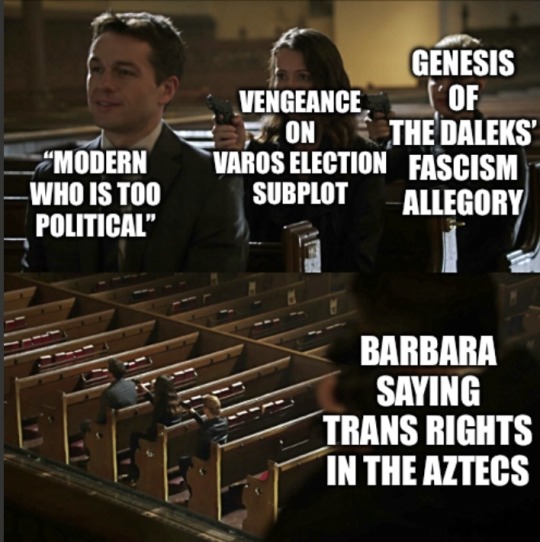
learn your fucking history
(IMAGE ID: A man sitting in a pew in a church labeled “Modern Who is too political”. Behind him is a person with a gun labeled “Vengeance on Varos’ election subplot”. Behind them is another person with a gun labeled “Genesis of the Daleks’ fascism allegory”. From a hidden corner is a sniper pointing a gun at that person, labeled “Barbara saying trans rights in The Aztecs”.)
#for reference those stories came out in 1985 1975 and 1964 respectively#and that’s barely even scratching the surface of this show’s history of political commentary#there’s the thatcherism arc with a pink tardis#eight saying that he’s never had a gender#three casually mentioning that he’s good buddies with chairman mao of all people#(watching several decades worth of writers for the show try to figure out what to do with that is fun)#nuwho’s gotten in on the fun too since like. aliens of london#i’m not saying it’s perfect but i am saying that i would like to know the definition of political commentary that#exists in the head of people who make these kinds of dumbass complaints#doctor who#classic who#vengeance on varos#genesis of the daleks#the aztecs#barbara wright#with genesis of the daleks it’s not even an allegory as much as it is terrance dicks beating you over the head with theconsequencesoffascis#how the fuck do you miss that
58 notes
·
View notes
Photo








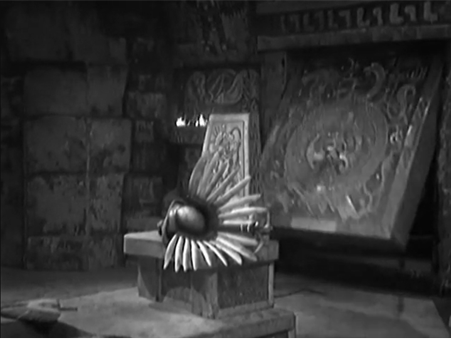
Father’s Day (2005) // The Aztecs (1964)
+ learning the rules of time travel
#doctor who#classic doctor who#new who#ninth doctor#rose tyler#first doctor#barbara wright#ian chesterton#parallels#rules of time travel#the aztecs#father's day#dwedit#doctor who edit#fan edit
710 notes
·
View notes
Text
Rewatching the Aztecs
This was a fascinating one to revisit. I remembered hugely enjoying it, and of course it has a very strong reputation. On rewatching, I think that's wholly deserved.
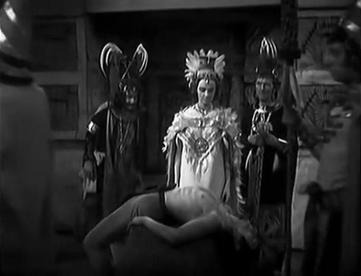
My thoughts:
The otherwise remarkable level of historical accuracy is only dampened by Barbara's bizarre belief that if she can stop the practice of human sacrifice, then maybe Hernán Cortés will decide altruistically against genocide.
I wish someone had cut that idea - Barbara wanting to stop the practice of human sacrifice because it's wrong would surely have worked on its own?
The costumes are gorgeous.
Jacqueline Hill carries the whole thing and shines. I love it when companions get to have and use their expertise.
Every fight scene is about 50% longer than it should be.
Where did Ian get those moves anyway? I guess we just have to assume he learned a lot in his National Service.
I would so love to have pure historicals back routinely.
#doctor who#classic doctor who#john lucarotti#william hartnell#the aztecs#first doctor#romana rewatches doctor who
39 notes
·
View notes
Text
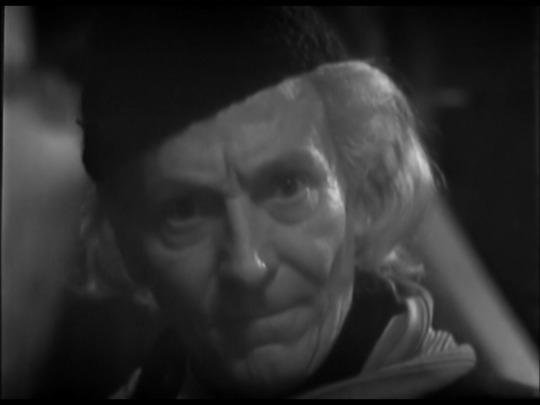
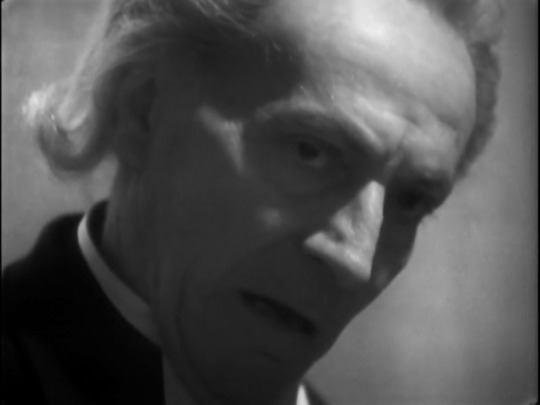

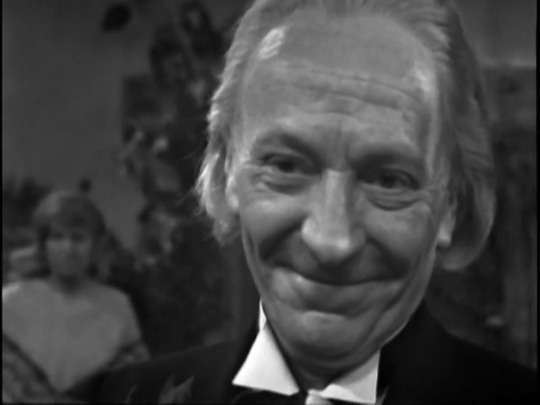
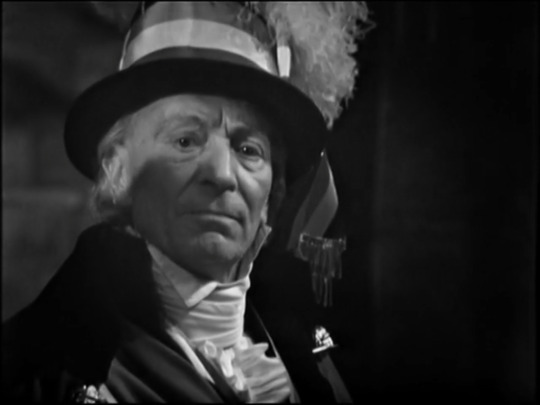
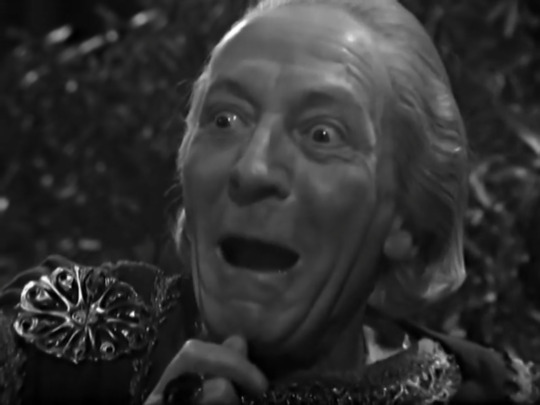


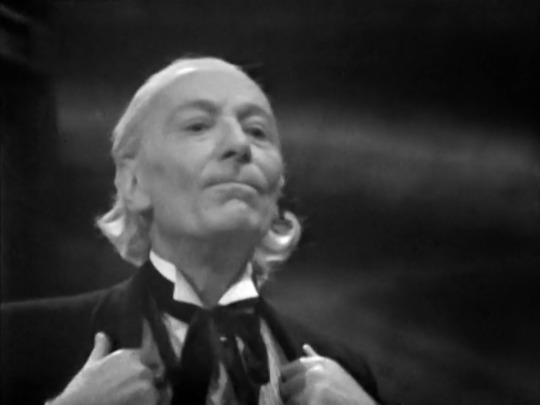

The First Doctor
November 23, 1963 — October 29, 1966
William Hartnell
January 8, 1908 — April 23, 1975
#classic who#first doctor#william hartnell#screencaps#an unearthly child#the daleks#the aztecs#the reign of terror#the romans#the time meddler#the daleks' master plan#the celestial toymaker#the tenth planet#dwbday
47 notes
·
View notes
Text
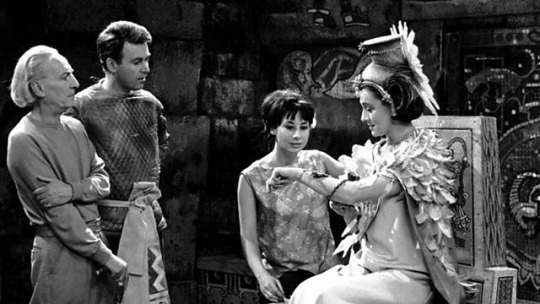
Doctor Who - The Aztecs
14 notes
·
View notes
Text
Anthropologist Zelia Nuttall transformed the way we think of ancient Mesoamerica
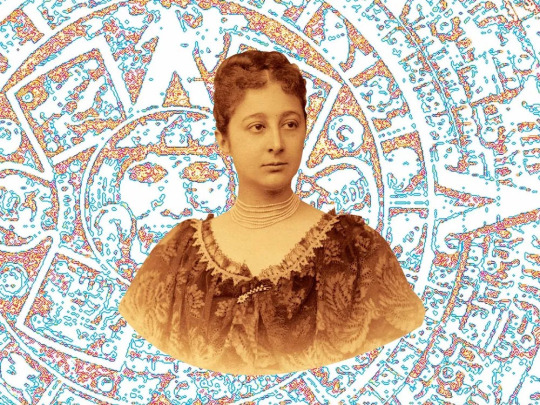
An illustration of the Aztec calendar stone surrounds a young portrait of anthropologist Zelia Nuttall. “Mrs. Nuttall’s investigations of the Mexican calendar appear to furnish for the first time a satisfactory key,” wrote one leading scholar.Peabody Museum of Archaeology and Ethnology, Harvard University
By Merilee Grindle
Author, In the Shadow of Quetzalcoatl: Zelia Nuttall and the Search for Mexico’s Ancient Civilizations
On a bright day early in 1885, Zelia Nuttall was strolling around the ancient ruins of Teotihuacán, the enormous ceremonial site north of Mexico City. Not yet 30, Zelia had a deep interest in the history of Mexico, and now, with her marriage in ruins and her future uncertain, she was on a trip with her mother, Magdalena; her brother George; and her 3-year-old daughter, Nadine, to distract her from her worries.
The site, which covered eight square miles, had once been home to the predecessors of the Aztecs. It included about 2,000 dwellings along with temples, plazas and pyramids where they charted the stars and made offerings to the sun and moon. As Zelia admired the impressive buildings, some shrouded in dirt and vegetation, she reached down and collected a few pieces of pottery from the dusty soil. They were plentiful and easy to find with a few brushes of her hand.
The moment she picked up those artifacts would prove to be pivotal in the life and long career of this trailblazing anthropologist. Over the next 50 years, Zelia’s careful study of artifacts would challenge the way people thought of Mesoamerican history. She was the first to decode the Aztec calendar and identify the purposes of ancient adornments and weapons. She untangled the organization of commercial networks and transcribed ancient songs. She found clues about the ancient Americas all over the world: Once, deep in the stacks of the British Museum, she found an Indigenous pictorial history that predated the Spanish conquest; skilled at interpreting Aztec drawings and symbols, and having taught herself Nahuatl, the language of the Aztecs and their predecessors, she was the first to transcribe and translate this and other ancient manuscripts.
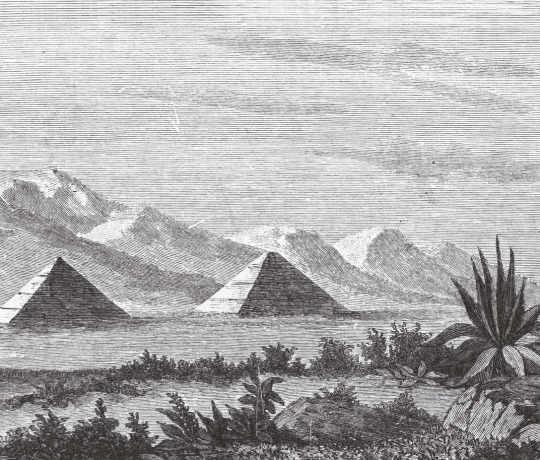
A 19th-century engraving of the pyramids of Teotihuacan. The Pyramid of the Sun was restored in 1910, on the centennial of the Mexican War of Independence. Bridgeman Images
She also served as a bridge between the United States and Mexico, living in both countries and working with leading national institutions in each. At a time when many scholars spun elaborate and unfounded theories based on 19th-century views of race, Zelia looked at the evidence and made concrete connections based on scientific observations. By the time she died, in 1933, she had published three books and more than 75 articles.
Yet during her lifetime, she was sometimes called an antiquarian, a folklorist or a “lady scientist.” When she died, scholarly journals and some newspapers ran notices and obituaries. After that, she largely passed from the public’s eye.
Today, anthropologists often have specialized expertise. But in the 19th century, anthropology was not yet a discipline with its own paradigms, methods and boundaries. Most of its practitioners were self-taught or served as apprentices to a handful of recognized experts. Many such “amateurs” made important contributions to the field. And many of them were women.
She was born in 1857 to a wealthy family in San Francisco, then a fast-growing city of about 50,000 people. Near the shore, ships mired in mud—many abandoned by crews eager to make their fortunes in the gold fields—served as hostels to a restless, sometimes violent and mostly male population. Other adventurers found uncertain homes in hastily built hotels and rooming houses. But the city was also an exciting international settlement. Ships arrived daily from across the Pacific, Panama and the east via Cape Horn.
Her well-appointed household stood apart from the city’s wilder quarters, but the people who lived there reflected San Francisco’s international character. Her mother, Magdalena Parrott Nuttall, herself the daughter of an American businessman and a Mexican woman, spoke Spanish, and her grandfather, who lived nearby, employed a French lady’s maid; a nursemaid from New York; a chambermaid, laundress, housekeeper, coachman and groom from Ireland; a steward from Switzerland; a cook and additional servants from France; and nine day laborers from China.
When Zelia was 8, her family left San Francisco for Europe. Along with her older brother, Juanito, and her younger siblings Carmelita and George, Zelia and her parents set off for Ireland, her father’s native land. Over the course of 11 years, the Nuttalls made their way to London, Paris, the South of France, Germany, Italy and Switzerland. Throughout that time, Zelia was educated largely by governesses and tutors, with some formal schooling in Dresden and London. But her time overseas shaped her interest in ancient history and expanded her language skills, as she added French, German and Italian to her fluent Spanish. All of this expansion thrilled her mind, but it also made her feel increasingly out of step with the expectations for young women of her age. “My ideas and opinions form themselves I don’t know how, and I sometimes am astonished at the determined ideas I have!” she wrote in a November 1875 letter.
She took refuge in singing and tried to be pleased with the few social events she attended. Photos from the time show Zelia as an attractive young woman with large, dark eyes, arched eyebrows and stylishly arranged hair. Nevertheless, she was unhappy. “I was infinitely disgusted with some of the idiotic specimens of mankind I danced with,” she wrote in an 1876 letter after a party.
The Nuttalls returned to San Francisco in 1876, when she was nearly 20. Two years later, she met a young French anthropologist, Alphonse Pinart, already celebrated in his mid-20s as an explorer and linguist. He had been to Alaska, Arizona, Canada, Maine, Russia and the South Sea Islands. Pinart may have led the family to understand that he was wealthy. In fact, he was almost penniless, having already spent his significant inheritance.
They were married at the Nuttall home on May 10, 1880. During the next year and a half, the couple traveled to Paris, Madrid, Barcelona, Puerto Rico, Cuba, the Dominican Republic and Mexico. Pinart introduced Zelia to a burgeoning academic literature in ethnology and archaeology, and she began to understand the theories of linguistics. She found 16th-century Spanish hardly a challenge as she consulted annotated codices—pictorial documents that traced pre-Columbian genealogies and conquests in Mesoamerica. While Pinart dashed from project to project and roamed widely among countries, tribes and languages, Zelia began to demonstrate an intellectual style that was more focused and precise.
Despite the excitement of discovery, something began to go wrong in the marriage. Hints of Zelia’s distress can be found in her effusive letters home. There was, for example, the shipboard admission that her husband was less attentive than she had anticipated. She noted that he was “so quiet and undemonstrative” that it was hard to imagine they were newly married. Some fellow passengers thought they were brother and sister—an odd assumption to make, even in Victorian times, about newlyweds.
By contrast, Zelia is nowhere to be found in Pinart’s surviving correspondence. On April 6, 1881, she gave birth to a daughter, Roberta, who lived only 11 days. To add to this melancholy time, her beloved father died in May, leaving her doubly devastated. A letter Pinart wrote to a friend just a few months later from Cuba appeared on stationery with a black border, signifying mourning, but he made no reference to his wife, her father or their child.
Zelia found solace in learning about her heritage when she and Pinart traveled to Mexico in 1881. She was eager to see her mother’s homeland and to hone her understanding of its pre-Columbian cultures. While Pinart carried out his own research, she began to learn Nahuatl, and she toured villages where dialects of the language were still spoken and ruins where the marks of the past could still be found.
The couple returned to San Francisco on December 6, 1881. By then, Zelia was pregnant again. In late January, Pinart set out to spend several months in Guatemala, Nicaragua and Panama, while Zelia awaited the birth of her second child, Nadine, at her mother’s house.
What finally drove Zelia to sue for divorce, on the grounds of cruelty and neglect, remains elusive. She may have felt that Pinart had married her for access to her family’s fortune. Many years later, she angrily informed Nadine that Pinart had spent the $9,000 she had inherited from her father as well as her marriage settlement. When the money was gone, and when her family was firm that he shouldn’t expect any more, he abandoned his wife and child. Once Zelia demanded a separation, he did not contest it, though obtaining the divorce was a long process that started soon after the couple’s return from their travels and didn’t conclude until 1888.
In later life, Nadine Nuttall Pinart would reflect on how much it had cost her to grow up without a father. “From the time before I can remember, he was taboo to me,” she wrote in a 1961 letter to Ross Parmenter, a New York Times editor who wrote numerous books about Mexico and developed a fascination with Zelia Nuttall. “I was frightened by the violent scoldings I got for mentioning his name. Later, I compromised with myself and when asked about him quietly said, ‘I never knew him!’ I realized that people thought he was dead and were sorry for me and said no more. In those days it was a disgrace to have a divorced mother.”
If the period between 1881 and 1888, when Zelia finalized her divorce, was fraught with tension and heartache, this was also when she set about redefining herself as a woman with a vocation. She spent five months in Mexico with her mother, her daughter and her brother between December 1884 and April 1885, visiting Cuernavaca, Mexico City and Toluca, and exploring archaeological ruins. It was during this time that Zelia made her fateful winter visit to Teotihuacan and acquired her first artifacts.
The pieces of pottery she picked up that day were small terra-cotta heads. They were abundant in the area among the pyramids. At the time, the site was still being used as farmland, and the artifacts came to the surface during ploughing. The heads themselves were an inch or two long, with flat backs and a neck attached. Scholars before Zelia—Americans, Europeans and Mexicans—had mused creatively about such relics, describing differences in their facial features and the variety of headdresses they had sported. Drawing on 19th-century fascination with the topic of race, the French archaeologist Désiré Charnay became convinced that he could see in them African, Chinese and Greek facial features. Charnay mused: Had their creators migrated from Africa, Asia or Europe? And if racial identity was a marker of human development, as many believed at the time, what might this curious mixture of features reveal about civilizations in the Americas?
This kind of thinking was typical. Mistaken ideas about Darwinism led many Western scholars to believe that civilizations evolved along a linear, hierarchical path, from primitive villages to ancient kingdoms to modern industrial and urban societies. Not surprisingly, they used this to legitimize beliefs about the superiority of the white race.
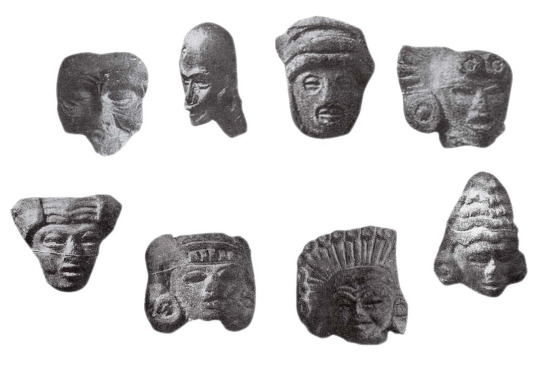
Zelia Nuttall divided her collection of terra-cotta heads into three classes. The first included rudimentary efforts to represent a human face (as seen above, far left). The second class (including the bald second head from the left above) had holes for attaching earrings and other ornaments. The third category included the rest of the heads pictured here, sporting what Zelia called “a confusing variety of peculiar and not ungraceful headdresses.” Public Domain
Zelia generally accepted her era’s assumptions about race and class, and she was comfortable with her elite status and its privileges. Yet in her research, she did not categorize civilizations as primitive, savage or barbaric, as other scholars did, nor did she indulge in racial theories of cultural development. Instead, she sought to sweep aside this kind of speculation and replace it with observation and reason.
The more Zelia examined her terra-cotta heads, the more she realized she needed guidance from someone who had more experience in the study of antiquity than she had. At the time, there were no departments of anthropology in colleges or universities, no degrees to be earned, no clear routes to building a career. To pursue her burgeoning interest in the ancient civilizations of Mexico, and to decipher the meaning of an assortment of terra-cotta heads, she contacted Frederic Ward Putnam, the curator of Harvard’s Peabody Museum of Archaeology & Ethnology and a leading expert on Mesoamerica. He agreed to meet her in the fall of 1885. The meeting was all she hoped for: Putnam warmed to her work and encouraged her to follow her intuitive grasp of how to observe and interpret evidence.
Putnam’s regard for women’s intellectual capacities was clear. He was one of a small number of Harvard researchers who gave lectures at “the Annex,” an institution established for women who had passed the college’s admissions test but were not allowed to attend classes or earn a degree. (The Harvard Annex eventually became Radcliffe College.) He hired a resourceful administrative staff of women and encouraged them to play a role in managing the museum. He also had a “correspondence school,” which he conducted through a widespread exchange of letters. As he once wrote, “Several of my best students are women, who have become widely known by their thorough and important works and publications; and this I consider as high an honor as could be accorded to me.”
Within months of their first encounter, in late 1885, Putnam asked Zelia to become a special assistant in Mexican archaeology for the Peabody. Less than a year later, in the annual report of the Peabody Museum, he wrote about her appointment in glowing terms: “Familiar with the Nahuatl language … and with an exceptional talent for linguistics and archaeology, as well as being thoroughly informed in all the early native and Spanish writings relating to Mexico and its people, Mrs. Nuttall enters the study with a preparation as remarkable as it is exceptional.”
With guidance from Putnam, Zelia wrote an investigation of the terra-cotta heads, her first published scientific report, which appeared in the spring 1886 issue of the American Journal of Archaeology. “At the first glance,” she wrote, “the multitude and variety of these heads are confusing; but after prolonged observation, they seem to naturally distribute themselves into three large and well-defined Classes.”
Each class, she theorized, had been created at a different time and represented a different stage in the culture. The first class contained “primary and crude attempts at the representation of a human face.” The second class included the first efforts at artistry. Her inspection revealed “holes, notches and lines,” suggesting ways in which tiny headdresses, feathers or beads could have been attached to the heads, and noted traces of several colors of paint and different kinds of clay.
The third class was the most important, Zelia argued, because of the quality of the molding and carving. This class had “modifications of feature sufficient to give every specimen an individuality of its own,” she wrote. “The faces are invariably in repose, in some the eyes are closed … faces young and smooth, others very elongated, some with sunken cheeks, others with wrinkles.”
By comparing these terra-cotta heads with ancient pictographs and writings, she showed that some of the heads represented children while others depicted young men, warriors or elders. Others showed the distinct hairstyles described in the writings of Bernardino de Sahagún, a 16th-century Franciscan friar who spent 50 years studying the Aztec culture, language and history. “The noblewomen used to wear their hair hanging to the waist, or to the shoulders only. Others wore it long over the temples and ears only,” Sahagún had written. “Others entwined their hair with black cotton-thread and wore these twists about the head, forming two little horns above the forehead. Others have longer hair and cut its ends equally, as an embellishment, so that, when it is twisted and tied up, it looked as though it were all of the same length; and other women have their whole heads shorn or clipped.”
These concrete observations allowed Zelia to challenge popular ideas about the supposed African, Asian, European or Egyptian origins of the “races” in the Americas. For example, by studying the ornamentation the heads displayed, she was able to identify the person or god each artifact represented and interpret its ritual or symbolic purpose. One clearly corresponded with Tlaloc, the pan-Mesoamerican god of rain, who had been shown in the pictographs with a curved band above the mouth and circles around the eyes. Another head, molded with a turban-like cap, corresponded with the goddess Centeotl; Zelia speculated that the clay turbans once had real feathers attached. She also noted the significance of various poses. “In the picture-writings, closed eyes invariably convey the idea of death,” she wrote.
The article revealed how Zelia intended to be seen as a scholar. First, she made it clear that she had read what others had written. Then she revealed that she would go beyond existing speculation to answer questions that had puzzled others; hers was to be original and important work.
In 1892, Zelia presented a paper in Spain about the Aztec calendar stone. Buried during the destruction of the Aztec Empire, the calendar stone had been unearthed in December 1790, when repairs were being made to the Zócalo, Mexico City’s central plaza. The sculpted stone, some 12 feet in diameter and weighing 25 tons, became a popular attraction exhibited in the Mexico City Cathedral, steps from where it had been found. Antonio de León y Gama, a Mexican astronomer, mathematician and archaeologist, had written about its discovery and praised the intelligence of the Aztecs who had created it. Alexander von Humboldt, who saw the stone when he visited Mexico in 1803-1804, included a drawing in his Views of the Cordilleras and Monuments of the Indigenous Peoples of the Americas, published in 1810, and encouraged Mexican intellectuals to study the meaning of its concentric circles and numerous glyphs. Many others took on its puzzles in the years that followed.
At the time of Zelia’s presentation, the Mexican upper classes were carefully crafting a new national image—a story that would allow Mexico to take its place among the modern nations of the world. The Aztecs, Maya, Olmecs, Toltecs, Zapotecs and other cultures had left their imprints throughout the country in magnificent temples, enigmatic statues, gold jewelry, jade figurines and painted murals. This history was reclaimed as a national heritage every bit as glorious as those of Greece and Rome. A statue of Cuauhtémoc, the Aztec king who resisted Cortés, took its place on Mexico City’s elegant Paseo de la Reforma in 1887. The calendar stone had been installed in a place of honor in the National Museum in 1885. But little was known about the actual customs and beliefs of those ancient people.

The Aztec calendar stone, a central focus of Zelia’s research, has been on display at Mexico City’s National Museum of Anthropology since 1885. Alamy
With her extraordinary knowledge of surviving codices, Zelia offered a novel “reading” of the giant calendar stone that had stumped others and provided new insights into the annual and seasonal cycles of daily life in ancient Mexico, illuminating the cosmology, agriculture and trade patterns of the Aztecs. She presented another version of the paper at the World’s Columbian Exposition in Chicago in 1893.
Zelia returned to Mexico City in February 1902, and after a personal audience with Mexican President José de la Cruz Porfirio Díaz, arranged by the U.S. ambassador, she embarked on a spree of travel to archaeological sites she had long wanted to visit. In May, she and 20-year-old Nadine joined friends at the Oaxacan ruins at Mitla, a religious center, where the “place of the dead” harbored both Mixtec and Zapotec art and architecture. On this dry, high plain ringed by mountains, Zelia strolled across vast stone patios, inspected the elaborate geometric friezes that lined and decorated them, explored temples and imagined a sophisticated society of kings, priests, nobles, artisans and farmers.
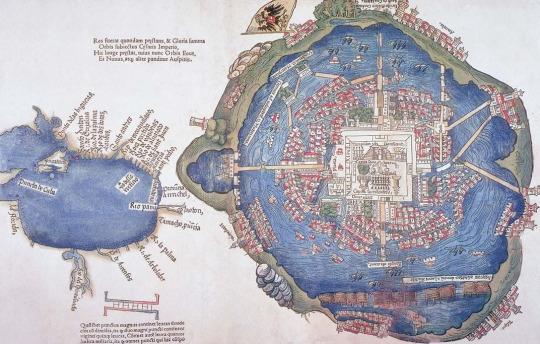
When the Spaniards arrived in Mexico in the 16th century, the Aztec Empire dominated the area. This map of its largest city, Tenochtitlan (now the historic center of Mexico City), was printed in 1524 in Nuremberg, Germany, likely based on a drawing by one of Hernán Cortés’ men. It shows the city’s elaborate network of roads, bridges and canals, complete with aqueducts and bathhouses. The Spaniards executed the last Aztec ruler, Moctezuma II Xocoyotzin, and forced his people to convert to Catholicism. Alamy
Zelia was welcomed into the international community of anthropologists in Mexico. She and Nadine traveled in the Yucatán with the young American anthropologist Alfred Tozzer, where they were beset by frequent rain and terrible roads. Arriving tired and wet in a small town, Tozzer, who would one day chair Harvard’s department of anthropology, was impressed by the women’s resilience. “Imagine the picture,” he wrote to his family on April 8, 1902. “Mrs. Nuttall, never accustomed to roughing it, a woman entertained by the crowned heads of Europe, sitting at a bench with the top part of my pajamas on drinking chocolate and her daughter with a flannel shirt of mine on doing the same.”
After a few months, Zelia and her daughter returned to Mexico City and purchased a mansion they called Casa Alvarado, in the upscale suburb of Coyoacán. The grand house never failed to impress. Frederick Starr, an anthropologist from the University of Chicago, was one of many who found the palace beautiful and restful: “We rode out to Coyoacán where we found Mrs. Nuttall and her daughter really charmingly situated. The color decoration is simple and strong. Nasturtiums are handsomely used in the patio and balcony effects. … While Mrs. Nuttall dressed, Miss Nuttall showed us through the garden, where a real transformation has been effected.”
Living in Mexico energized Zelia. In addition to her affiliation with Harvard, she had funding to travel and collect artifacts for the Department of Anthropology at the University of California. “With me here, in touch with the government and people, I think that American institutions can but profit and that I can do some good in advancing Science in this country,” she confided to Putnam.
Impressed by her knowledge of the country’s past, public officials and foreign visitors came to see her and listened carefully as she led them around her home and garden, explaining the collection she was busy assembling. Her garden, patio and verandas were home to an increasingly large number of stone artifacts, a beautiful carving of the serpent god Quetzalcóatl, revered for his wisdom, among them. She took up “digging” near Casa Alvarado, an activity one guest later recalled fondly. “Every morning after breakfast Mrs. Nuttall would give me a trowel and a bucket. She herself was equipped with a sort of short-handled spade, and we would go out into the surrounding country and ‘dig.’ We mostly found broken pieces of pottery, but she seemed to think some of them were significant, if not valuable. … She was a very handsome woman and very charming. She lived in great style, with many Mexican servants.”

The Codex Borgia, an accordion-folded document of Aztec life, was brought to Europe during the Spanish colonial period. Made of animal skins and stretching 36 feet when unfolded, the codex catalogs different units of time and the deities associated with them. It also includes astrological predictions once used for arranging marriages. Zelia drew on the codex to help her decode the Aztec calendar. Courtesy Ziereis Facsimiles

A section from the Codex Borgia
Zelia continued to travel throughout the country. She found a 14-page codex painted on deerskin, with commentary in Nahuatl, that she believed so valuable that she bought it with her own money, selling some of her possessions to afford it. “Owing to my residence here I must keep it a profound secret that I possess and sent out of the country this Codex,” she wrote to Putnam.
While she was not above smuggling treasures out of Mexico, Zelia also worked in the National Museum, contributing to its displays and archives, and she became an honorary professor of the institution.

Zelia had never owned a home until she bought Casa Alvarado in 1902. In a letter, she described the property as “a beautiful old place with extensive gardens.” Smithsonian Archives
Her Sunday teas at Casa Alvarado were a study in salon orchestration. “She would have 30 or 40 people and she would change the groups she invited,” one visitor recalled. “Sometimes they were all people who knew each other. Or else she would bring people together she wanted to introduce to each other. They weren’t like old-style Mexican parties, with all the women on one side and men on the other. The men and women were mixed together.”
According to an oft-repeated legend, at one of her soirées, she advanced to welcome an eminent guest just as her voluminous Victorian drawers came loose and dropped to her ankles. She calmly stepped out of them and proceeded as if nothing had happened. Zelia was, above all, self-confident.
Zelia Nuttall left Mexico during the early months of 1910 and did not return to her beloved Casa Alvarado for seven years. Throughout that time, Mexico was in the midst of a violent revolution. As many as two million people lost their lives in the ten-year conflict, and the country’s infrastructure was reduced to tatters. Even after the end of the most extensive violence, turmoil erupted sporadically until the late 1920s.
By then, visitors to Casa Alvarado agreed that Zelia was rooted in a bygone era. She was a middle-aged woman with thick glasses who favored shawls, laces and jet beads. Her palace was still filled with stuff only a Victorian could accumulate, but Mexico was telling new stories about itself.

The writer D.H. Lawrence used Zelia as a model for a fictional character—“an elderly woman, rather like a Conquistador herself in her black silk dress and her little black shoulder-shawl.” Antropo Wiki
The elites of the previous generation had asserted that descendants of the Aztec, Maya and other civilizations deteriorated into poverty and abandon. Young artists and intellectuals now rejected this belief. In Diego Rivera’s vast public murals, he showed the people of Mexico being ground into poverty and submission by Spanish conquistadors, a rapacious church, foreign capitalism, the army and cruel politicians. Quetzalcóatl replaced Santa Claus at the National Stadium; Chapultepec Park hosted Mexico Night.
Zelia did not like the revolution and she did not approve of what came after it. She did not celebrate the masses; she believed in hierarchy and a natural order of classes and races. Yet she was determined to be relevant to a new era in Mexico. Casa Alvarado became a meeting place for politicians, journalists, writers and social scientists from Mexico and abroad, many of whom came to witness the possibilities of change in the aftermath of a people’s revolution.
Nevertheless, the stubborn elegance of Casa Alvarado in the 1920s was clear testimony that Zelia was not willing to give up her lifestyle. When the French American painter Jean Charlot was a guest at one of Zelia’s teas, he was aghast at the Mexican servants in white gloves.
When Zelia Nuttall died in 1933, the U.S. consul in Mexico City wrote to Nadine—by then a 51-year-old widow living in Cambridge, England—assuring her that they’d given her mother a tasteful funeral. “Your Mother was very highly thought of here, as evidenced by the floral offerings and the number of her friends who came to the funeral service at the cemetery, it being estimated that about one hundred persons were present.”
By that time, the field of anthropology was dramatically changing, becoming more systematic and organized. Those who entered the field in the 1920s and 1930s built expertise in the classroom and under supervision in the field, passing a variety of tests and milestones determined by academic experts and acquiring a credential as proof of the right to pursue these inquiries. With these rigorous new standards, they asserted their superiority as scholars over those of Zelia’s generation.

Researchers thought this item at Vienna’s Museum of Ethnology was a “Moorish hat” before Zelia identified it as a Mesoamerican headdress. Alamy
Yet Alfred Tozzer, in his memorial in the journal American Anthropologist, reflected that Zelia “was a remarkable example of 19th-century versatility.” She was wrong in some of her overarching theories. For instance, she fallaciously argued that ancient Phoenician travelers had carried their culture to Mesoamerica. But she was right about many other things. Through her letters, articles and books, we can trace what she got right and what she got wrong as a scholar, and we can follow her as she moved from one research obsession to the next.
Her private life is harder to grasp. Among all the artifacts, there is little about the quips and gossip she exchanged with friends, the piano music she liked to play and sing. We cannot know what was in the boxes of papers in the cellar of Casa Alvarado that were burned in the housecleaning undertaken by its new tenants. We cannot retrieve personal and public documents lost in the San Francisco earthquake in 1906.
What we do know is that she had to make sacrifices, often very personal ones. We can feel her vulnerability, uncertainty, anger and embarrassment in the letters she wrote, as well as her self-assuredness. It required unusual self-discipline to learn so many languages and to gain a mastery of ancient pictographs. Her almost constant travels imperiled her health even while they advanced her vast network of friends, colleagues and patrons. But she continued to work, and that work helped establish the foundation on which many others now build.
A single mother pursuing a career while looking after a family in a man’s world: In some ways, Zelia Nuttall was a very modern woman.
Adapted from In the Shadow of Quetzalcoatl: Zelia Nuttall and the Search for Mexico’s Ancient Civilizations by Merilee Grindle, published by The Belknap Press of Harvard University Press. Copyright © 2023 by Merilee Grindle. Used by permission. All rights reserved.
#Women in history#Women in Anthropology#Zelia Nuttall#The Aztecs#Merilee Grindle#In the Shadow of Quetzalcoatl: Zelia Nuttall and the Search for Mexico's Ancient Civilizations#Books by women#Books about women#teotihuacan#mesoamerica#Nahuatl#Published women#Many of the first anthropologists were women#Alphonse Pinart was just another man who blew through his money#Women's careers flourishing after dumping a parasitic man#Frederic Ward Putnam#Men who encouraged women#The Annex#Lady scientist
40 notes
·
View notes
Text
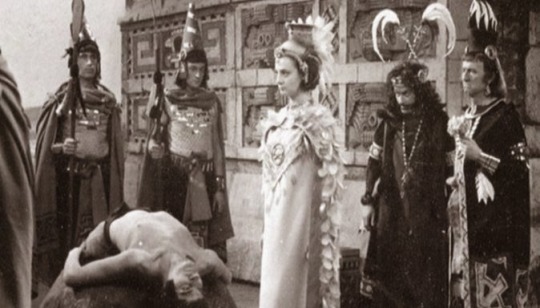
On 8 April 2024, the sun will be obscured and darkness will fall over the land even though it is day. To counter this and bring back the sun, Tlotoxl must offer perfect sacrifice while the Goddess Yetaxa looks on. Let's hope it works.
#dw#doctor who#classic doctor who#the Aztecs#first doctor#1st doctor#John Ringham#jacqueline hill#solar eclipse
11 notes
·
View notes
Photo
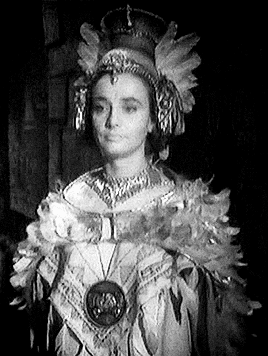


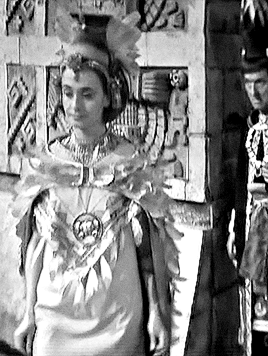

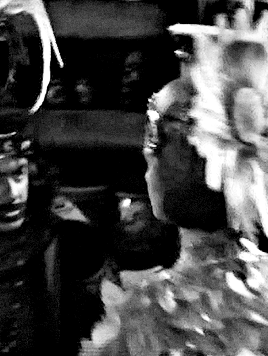
CLASSIC WHO FASHION
Barbara Wright ◈ The Aztecs
#doctor who#classic who#the aztecs#first doctor era#barbara wright#first doctor#companion outfits#barbara wright outfits#firstdoctoredit#dwedit#classicwhoedit#gifs#mine#classic who fashion
142 notes
·
View notes
Photo




“...and the history?”
The Aztecs - season 01 - 1964
#doctor who#classic doctor who#classic who#first doctor#william hartnell#the aztecs#barbara wright#jacqueline hill
158 notes
·
View notes
Text
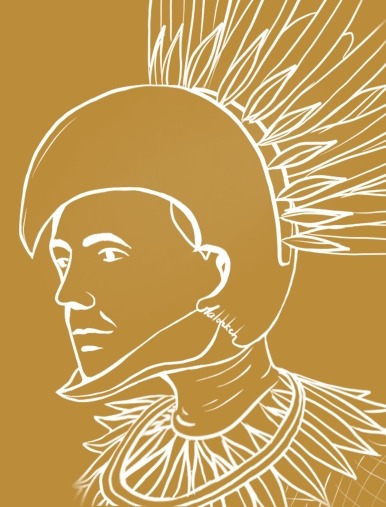
Inktober 2023 day 06 : Golden (Ian Chesterton - Doctor Who)
From the arc "The Aztecs", one of my favorite story <3
#inktober 2023#inktober2023#inktober day 6#inktober golden#golden#fanart#whoniverse#doctor who fanart#digital fanart#classic who fanart#classic who#classic doctor who#doctorwho#dw companions#dw fanart#doctor who#doctorwho fanart#first doctor#the aztecs#ian chesterton#digital art
18 notes
·
View notes
Text
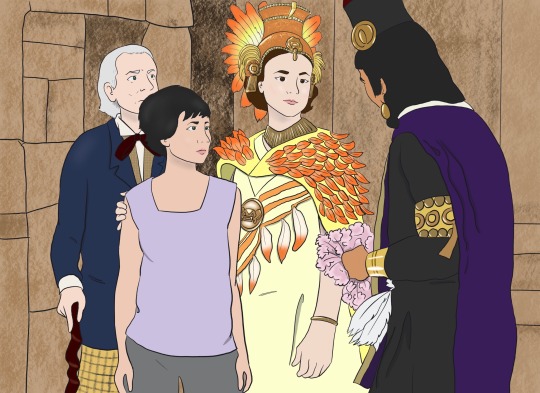
#redraw of a behind the scenes photo#doctor who#first doctor#classic doctor who#classic who#barbara wright#fan art#william hartnell#susan foreman#doctor who companions#1st doctor#the aztecs#Barbara’s outfit is so nice to draw and colour#that’s not sarcasm#I think it is a given that The Aztecs is one of my fave story arcs
83 notes
·
View notes
Text

Rewatching Classic Doctor Who, some episodes I haven't seen in years, some of the animated reconstructions I haven't seen at all.
The Aztecs AKA Serial F
The Aztecs is an incredibly strong showing this early in the series. Once again, when the team is on their A game (as they are in this episode), the whole becomes greater than the sum of its parts.
John Lucarotti turns in an excellent script, drawing on his own experiences in Mexico and interest in Aztec culture to produce a wonderfully nuanced look at the Aztecs. The costuming is fantastic, the sets are great (despite some all-too-obvious backdrops), Jacqueline Hill goes to town in the lead role, William Hartnell gets a chance to do something besides be bitchy, Carole Ann Ford spends half the serial literally on vacation and still gets a great scene where Susan decides the true injustice of Aztec society is arranged marriage. Easily the best plotted and paced storyline so far, there's a reason most of the old serials ended up in the 4 episode/approximately 90 minute bracket. Oh and John Ringham turns in a marvelous performance as Tlotoxl, the show's first standout antagonist, performed with just the right amount of ham and cheese to give him a memorable Shakespearean flare without going too far over the top.
The TARDIS arrives in an Aztec tomb. Fortunately Axtec culture is Barbara's specialist subject. She grave robs a bracelet and when the crew exits the tomb... she's mistaken for a reincarnation of the priest Yetaxa but also a god? The Aztecs get full credit for not minding at all that their previously male priest has been reincarnated as a (white) woman. Barbara immediately decides to try to alter history, the first time one of the crew actively takes steps to interfere. She thinks (correctly) that despite the Aztec's bad reputation they deserve better than colonization and genocide at the hands of the conquistadors. And with her head full of the very best ideals of English white saviour-ism, she will force the Aztecs to cease human sacrifice by fiat. Which will in turn convince the Conquistadors (despite being just about the most ruthless, dishonorable, violent assholes in history... which is some stiff competition) to let them live in peace as co-equals. The Doctor reprimands her, insisting that you cannot change history despite having previously given fire to primitive humans, genociding the Daleks on behalf of the Thals, going on holiday with Marco Polo, and genociding the Voords. Ian goes off to warrior training, which he has quite a knack for, being a much better melee combatant than Ixta who has been training for life. Susan gets sent to a nunnery to learn how to be a good wife. And the Doctor gets sent to the Aztec equivalent of an old folks home. And then he accidentally gets engaged.
Barbara's plan goes as well as you might expect. The Aztecs, it turns out, quite like their culture the way it is. Instead of some hand wavey "fixed point in time" nonsense, this story makes it clear that history has an inertia. One person in the right place at the right time, more often that not, can't make a difference against history's flow. Barbara did manage to make an outcast of the Priest of Knowledge Autloc which the show counts as a win but... I'm not so sure. Tlotoxl is the real winner in the end, proving that Barbara was a false god and continuing on with his role, supporting the status quo and letting perfect sacrifice be made as the TARDIS crew moves on to new adventures. But not before the Doctor decides to take the bracelet from his Aztec fiance with him as a memento.
Next up: The sensual Sense-Sphere!
#doctor who#classic doctor who#first doctor#ian chesterton#barbara wright#william hartnell#carole ann ford#jacqueline hill#susan foreman#william russell#doctor who rewatch#serial F#the aztecs#MFW I accidentally propose to someone by making them hot chocolate
7 notes
·
View notes
Text

Huevember 5b
Barbara Wright as Yetaxa
49 notes
·
View notes
Photo



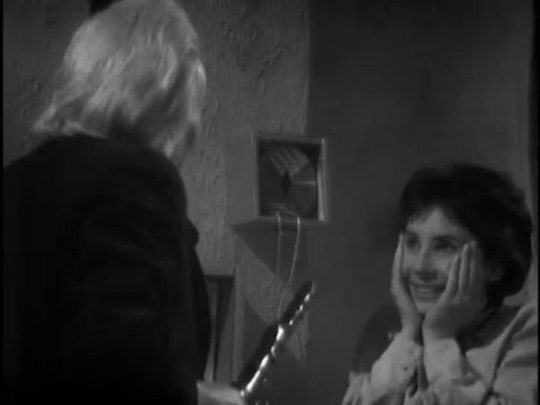
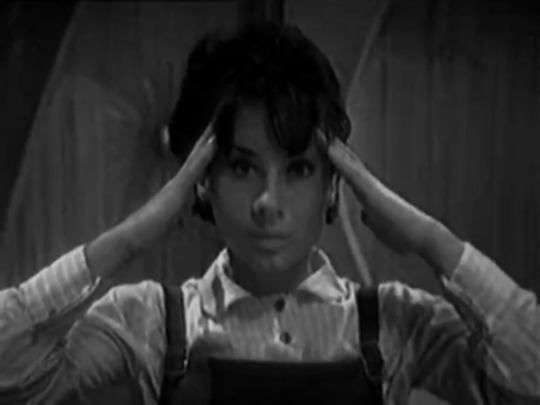





Happy birthday, Carole Ann Ford!
#classic who#carole ann ford#susan foreman#screencaps#an unearthly child#the daleks#the aztecs#the sensorites#the dalek invasion of earth#dwbday
31 notes
·
View notes
Text
Classic Who: Season One

(minus Marco Polo - I'll probably make a separate tier list for audio stories though)
(Please don't take these too seriously)
#doctor who#classic who#doctor who girlie#classic doctor who#first doctor#tv#1960s#ian chesterton#barbara wright#susan foreman#an unearthly child#the daleks#daleks#the edge of destruction#the keys of marinus#marco polo#the aztecs#the sensorites#the reign of terror
6 notes
·
View notes
Text
Changing History: The End of the Pure Historical
I wrote a ridiculously long Doctor Who essay on a whim and now you all must suffer my thoughts and opinions.
So, considering that Doctor Who is about traveling in a time machine, visiting historical events is inevitable. The show was originally designed for this. Barbara and Ian were a history teacher and a science teacher respectively. The show would alternate between stories set in the past, with Barbara as the main character interacting with history, and stories set in the future, with Ian as the main character using his knowledge of science to save the day. Susan was a student they could deliver lessons to to make the educational tangents sound more natural. The Doctor was just there to be the reason Ian and Barbara ended up in these situations in the first place.
Over time, pure historicals, adventures in history with no science fiction elements other than characters from the future being there, were phased out of the show. This essay isn’t about the reason why that happened, why that choice was made, but why that kind of needed to happen. This isn’t to say that the pure historicals were bad. Some of the best early Doctor Who stories were pure historicals. But, the way the subject of changing history, something inevitable in stories about time travel, was handled, changed over time into something questionable. Science fiction elements, things that weren’t supposed to happen in history anyway, served as a way of avoiding the moral dilemmas that a show for children just wasn’t equipped to handle.
You could argue that parts 2-4 of An Unearthly Child were the first historical adventure, going back to the Stone Age and sorting out caveman politics over the discovery of fire. However, the discovery of fire occurred before the invention of writing, so this is a time period we know very little about, making it a difficult first history lesson, hence all the politics. Because of this confusion, Marco Polo serves as the first pure historical. Since Marco Polo is seven parts long and completely missing, it’s quite difficult to talk about, so the first story to feel like one of the pure historicals of the Hartnell era is The Aztecs.
Season 1: You Can’t Rewrite History, Not One Line
The Aztecs is the first Doctor Who story to directly discuss the possibility of a time traveler changing history. It establishes the rules of time travel, as they are in season 1. In The Aztecs, changing history is impossible. It’s not that it’s wrong to change history, but that history is fixed and changing it is impossible. The Aztecs are destined to practice human sacrifice and Barbara can’t change it. History resists any attempt to change it, so it’s literally impossible. This also implies that the characters can interact with historical figures and get involved in historical events without consequence, because everything will just turn out the way it’s supposed to anyway.
The Reign of Terror explains the rules established in The Aztecs more clearly. If you tried to tell Napoleon about his future, he wouldn’t believe you. If you shot at him, the bullet would miss. If it’s not supposed to happen, it simply doesn’t.
The rules of time travel established in season 1 didn’t last. Maybe it was more interesting that way, if there was some risk that our heroes might erase their own existence by accident, or something like that.
Season 2: I Might’ve Poisoned Nero
The Romans, the first historical of season 2, makes it perfectly clear that the characters can change history and must avoid doing so. The Doctor warns Vicki not to try to change history before he lets her explore unsupervised. She discovers a plot by Nero’s wife to poison a woman that’s attracted her husband’s attention. Said woman is Barbara, but Vicki doesn’t know that. She just doesn’t want this anonymous innocent woman to die. So, when Nero and the woman are served drinks, with the woman’s being poisoned, Vicki switches the goblets around so Nero will be poisoned instead. She tells the Doctor what she’s done and he scolds her for it and rushes to stop Nero from drinking, preserving the course of history.
The important thing about The Romans that makes it stand out from previous historicals is that it’s a comedy. Before The Romans, historicals often had darker tones than the sci-fi stories due to the events being based off real things. The Aztecs practicing human sacrifice is the central dilemma of their story, and in The Reign of Terror, Barbara and Susan narrowly avoid the guillotine. The more brutal aspects of history are treated as deadly serious.
But, The Romans, though it still portrayed darker aspects of the era, such as slavery, gladiator fights, and Nero being a serial rapist and general violent lunatic, much of it is treated like dark comedy. Not all of it is played that way. Ian and Barbara’s storyline of being sold into slavery has a more serious tone than The Doctor and Vicki’s storyline where the Doctor is mistaken for a famous musician and has to pretend to be him for Nero and his court, which is a screwball comedy. Barbara’s interactions with Nero are where the storylines overlap. When the show focuses on Barbara’s perspective, Nero’s actions seem a bit more disturbing than they do from the Doctor’s perspective.
The combination of the more disturbing aspects of history and the zaniness of the mistaken identity plot make The Romans into a rather dark comedy. It’s kind of surprising that they got away with this on a show for children in 1965. This comedic tone also allows the story to get away with what would otherwise be a nasty ending. The Doctor accidentally gives Nero the idea of starting the Great Fire of Rome. The story doesn’t take this seriously. Vicki is excited to watch a major historical event unfold and gives the Doctor credit for bringing it about, being a part of history. They laugh the whole thing off.
Celebrating inspiring a mad emperor to set a city on fire, killing many people along the way, sounds extremely wrong, but the comedic tone of the story makes it easy to ignore. Also, the Doctor seems to think, despite what happened with the poisoning plot earlier, that the season 1 rules about changing history still apply. If the Doctor hadn’t been there, something else would’ve given Nero the idea to burn down Rome. It’s just what’s meant to happen, so he’s not really responsible for it. Vicki thinking it’s cool that the Doctor might be responsible for it is sort of Vicki being Vicki. She’s a teenager who’s kind of drawn to chaos. She thinks monsters are adorable and literally squeed over getting to meet Nero in the first place. She’s Like That sometimes. Since she tried to save an innocent woman from being poisoned, we know that she’s not a bad person, but she reacts to things happening right in front of her, like the poisoning, differently from things happening at a distance, which is where she’s watching the fire from. It’s not cruel, just immature in an “out of sight, out of mind” sort of way.
But, though The Romans can use its tone to get away with it, this new attitude towards history carries a bit of a disturbing implication. Changing history is possible, but it’s bad. Okay, fair enough. But causing history to happen, even the bad stuff, is treated as good. If something bad is meant to happen, trying to stop it is wrong, but actively participating is right. An Unfortunate Implication in a comedy story can be forgiven, but if it shows up in a more serious story, it could be a problem.
At the end of season 2, two important things happen. First, Ian and Barbara leave the show. Without the history teacher, you don’t have the set-up for history lessons. The sci-fi stories had given up on being educational well before this, but the historicals continued to have an element of their original purpose, which is now a lot harder to do.
The second thing is that we get our first historical to include sci-fi elements. The Time Meddlers starts out as a historical set in 1066. We’re about to learn some things about Saxons and Vikings and The Battle of Hastings. But, we interrupt this history lesson to bring you the Monk. We meet another Time Lord (though they weren’t called that yet) with another TARDIS. But, the Monk has come to 1066 with the intent to change history. He’s not trying to take over the world or anything. He actually wants to make the world better by changing historical events. But, he has no way of knowing if things will turn out the way he wants them to. Will Shakespeare have his plays performed on television or will he not even exist? The main reason to stop the Monk is that he’s reckless.
But, the Monk creates the first situation in the show’s history where the Doctor faces down a rival, an equal and opposite. This would later become the purpose of the Master. Like the Master, later versions of this sort of conflict had the rival as malevolent, seeking power or just wanting to cause problems for the hell of it. The reason the Monk is against the Doctor is purely based on the subject of changing history. The Doctor is good because he doesn’t change history and the Monk is bad because he does. The Monk’s recklessness creates a justification for why he’s in the wrong, but when you think about it, the Monk knows that something bad’s gonna happen and he wants to stop it, while the Doctor wants to do nothing and allow innocent people to suffer and die, simply because they’re supposed to. The morality of time travel, when history can, but shouldn’t, be changed, if the consequences of successfully changing it aren’t shown, is that of maintaining the status quo, no matter what.
But, in The Time Meddler, this position is justified, even if we get to see Vikings committing atrocities along the way. The show’s attitude towards changing history in season 2 is one that has dark implications, but the show doesn’t seem to be aware of them. However, the show is about to deliberately take a darker turn, and this would make the pure historical completely fall apart.
Season 3: Saving Anne Chaplet
Season 3 was the first time the show changed producers, leaving Hartnell the only member of the original team left, something he wasn’t happy about. A new producer meant a new direction for the show. In this case, it was a darker direction. None of the cast liked this and there was something of a power struggle behind the scenes. Maureen O’Brien, Vicki’s actress, was a victim of that power struggle, fired after complaining about her lines in Galaxy 4. Galaxy 4 wasn’t the most well-written of stories, so I can only assume she had a point.
This led to Vicki’s sudden departure in The Myth Makers, falling in love with Troilus, becoming Cressida, and leaving the TARDIS to say with him. The fact that Vicki was a teenage girl from the 25th century deciding to marry a man she just met in the ruins of Troy in the early Bronze Age, and that Cressida is known for being more than just the lover of Troilus in the myths of the era, are conveniently ignored. If they didn’t write her out here, she would’ve been killed off in the next story, a role instead given to Katarina.
Look, Vicki is my favorite Hartnell companion and I will be mad about this.
The Myth Makers is an interesting historical in that it’s mostly a historical comedy like The Romans, but then the Greeks get into Troy and the destruction is taken completely seriously. The Doctor was involved in the creation of the Trojan Horse, similar to his inspiring the Great Fire of Rome, but the results aren’t funny this time and no one celebrates them. Steven is severely injured in battle and thus begins a long string of darker episodes, with a short break for a rushed Christmas special.
The Daleks’ Master Plan is a bleak, brutal twelve-parter with a high body count, including two companions, Katarina and Sara. Neither one is a companion for a very long time, but they’re considered companions and they both die horribly. The Doctor laments the terrible waste of human life, though Steven kind of has to remind him of their losses first.
The Daleks’ Master Plan isn’t a historical, but it’s a demonstration of just how dark the show was getting around this time.
You’d expect that after that bloodbath, the show would take a breather and do a light, fun story. Right? Wrong! The next serial is literally titled The Massacre. To be fair, the original serials had different titles for each episode and The Massacre title was provided later, but it’s not at all inaccurate. The story is also known as The Massacre of Saint Bartholomew’s Eve, but that title is both very long and not quite historically accurate, so I’m sticking to The Massacre.
The Massacre is about a historical event that a lot of the audience wouldn’t have known about. Though a lot of historical info would’ve been new to child viewers, adults would know that The Aztecs practiced human sacrifice and that Nero burned down Rome. The Myth Makers follows mythology more than actual history, because we don’t know much about any real Trojan War, only that a conflict like it happened, but everyone knows the story. The violent endings of The Romans and The Myth Makers were something the older audience members would’ve been ready for. The Massacre was not. The intent was to shock people with the destruction.
Now, even by missing episode standards, almost nothing of The Massacre has survived, so there’s definitely some stuff that we’re missing when recapping and analyzing it here. Keep that in mind, though it’s not going to be a big part of what I talk about.
Though there were a few pure historicals after The Massacre, it’s the death of the pure historical. It’s not that it’s a bad story. Not at all. But, this is the moment where the problem The Romans introduced and The Myth Makers called further attention to really comes to a head.
In hindsight, there are aspects of The Massacre that can be compared to The Fires of Pompeii, a comparatively recent Doctor Who story that ends in a big historical tragedy. It finds a way to give this sort of situation a happier ending without seriously changing history. We’ll get to that towards the end.
The Massacre barely features the Doctor at all. Instead, Steven, the only companion at this time, takes over as main character. He, like much of the audience, has no idea what’s about to happen. He wanders around Paris in 1572 and meets some of the Huguenots, French Protestants. Steven is implied to also be a Protestant, but whatever his religion is, he sympathizes with the people he meets, especially a young woman named Anne Chaplet. He also meets the Abbot of Amboise, who looks exactly like the Doctor. Because of this, Steven thinks the Abbot might be the Doctor in disguise. This turns out to not be the case, as the Doctor shows up again later, learns what day it is, tells Anne to run and takes Steven back to the TARDIS. He explains that a massacre is about to happen and that the deaths will include several people Steven met, though he doesn’t know about Anne. Steven storms out of the TARDIS in a rage that the Doctor didn’t bring Anne along with them, but the Doctor insists that he can’t change history.
The Massacre has a bit of a rushed happy ending when a teenage girl mistakes the TARDIS for a real police box and Steven returns because there are real police on the way, so they have to dematerialize. The girl introduces herself as Dodo Chaplet. After learning a bit more of her family tree, Steven’s convinced that Anne survived the massacre and that he’s now traveling with her descendant.
I mentioned The Fires of Pompeii before because Steven basically wanted the same thing Donna did: If we can’t save everyone, can we at least save someone? He just wanted to save Anne, someone with so literal relevance to history that the Doctor didn’t know what happened to her. But, even that would be changing history too much. Several incarnations later, the Doctor learns that this actually isn’t the case and he probably could’ve saved Anne without causing a problem.
Weirdly, leaving Anne behind might’ve changed history more than taking her with him would’ve. It’s never explained why Dodo would have the same surname as Anne Chaplet, an unmarried woman, if she was her direct descendant. Steven comes to this conclusion out of nowhere. The only way the direct descendants on Anne would carry her maiden name is if she had a child out of wedlock and the child’s father wasn’t in the picture, which is kind of an odd thing to just assume about someone. Steven might just be desperate to believe that Anne survived, but there could be another reason for him to suspect that. Although she’s never directly portrayed as a love interest, Steven gets very close to Anne and they spend a night alone together. They could’ve had sex during that night. If Anne got pregnant after that encounter, she might’ve given the child her maiden name due to the father being out of the picture. Generations later, Dodo shows up.
Steven is a space pilot from some unknown time in the future. If he hadn’t shown up in 1572, there’s a chance that Dodo might’ve never existed. If Anne went with Steven and the Doctor, her child probably wouldn’t have met whoever he had children with, so the line leading to Dodo wouldn’t have existed. It was the Doctor’s decision to leave Anne behind, presumably not knowing that Anne’s history had already been changed, so he made a decision that changed history and got a new companion out of it. Nice!
But, that’s not the only interesting thing about the course of history in The Massacre. I mentioned when talking about The Time Meddler how the Monk existed in opposition to the Doctor. A similar thing happens with the Abbot in a more symbolic sense, since the Doctor and the Abbot never even meet. The Abbot, involved in the build-up to the massacre, is someone who causes a violent historical event to occur. He’s not the main perpetrator, admittedly. He was involved in various plots against the Huguenots, but his death was one of the things that inspired the massacre. But, that still means that the massacre couldn’t have happened the way it did without him. This connects back to the implications of The Romans that it’s bad to change history, but it’s good to be a part of it, even if it’s a violent part. The Doctor isn’t the Abbot, but having them played by the same actor and mistaken for one another creates a parallel. It makes you think of more serious, deliberate versions of the ending of The Romans. If the death of innocent people was part of the course of history, and the Doctor took actions that caused the death of those innocent people, that would be considered a moral good by the show’s logic.
This can also be compared to The Fires of Pompeii. The Doctor, in order to stop the monster of the week, actually has to make the volcano erupt and destroy Pompeii. The story has him backed into a corner: either he causes the eruption and destroys this one city, or the monster of the week kills everyone. It’s a trolley problem. The Doctor chooses the death of one city over the death of the world. But, destroying Pompeii isn’t treated as good or heroic, only tragically necessary, and, unlike in The Massacre, he’s convinced to save a single family. Basically, The Massacre asks a question and, nearly 50 years later, The Fires of Pompeii answers it: Maintaining the course of history isn’t a moral good, but it might be necessary to prevent something worse. Also, saving a few innocent people is fine but you can’t save all of them.
A key difference here is that The Fires of Pompeii isn’t a pure historical. There’s a monster of the week to cause a potential apocalypse. The Doctor’s motivation isn’t to preserve the course of history, but to prevent a greater tragedy. Adding sci-fi threats to historicals, potential tragedies that aren’t supposed to happen, means that the show can stay away from having the characters be portrayed as morally good for ignoring or even causing historical tragedies. Instead of visiting real tragedies, sci-fi historicals create new ones, which keeps the show out of the uncomfortable territory it got into when it was decided that history could be changed.
Before we move on, I’d like to make it clear, if it wasn’t clear by now, that I’m not saying that The Fires of Pompeii is better than The Massacre. The Massacre barely exists and I can’t even make that judgement. They’re both good stories. But, they’re interesting to compare as,a moral question and answer. Cool stuff all around.
The Troughton Era: The Highlanders and the Cruelty of the Time Lords
The Highlanders wasn’t the last pure historical. Black Orchid, a forgettable two-parter from 1982 was. The Highlanders is also quite close to being forgettable, though that may be due to the fact that it’s completely missing. From the perspective of 2022, The Highlanders is The One We Got Jamie From, which is a reason to forgive any problems that the story might have. At least it introduced one of the best companions in the show’s entire history.
Though The Highlanders wasn’t the last pure historical, that’s only because a much later era of the show experimented with bringing pure historicals back while trying to find itself. It doesn’t feel like there were meant to be anymore after this one.
So, we’re now in season 4, the season where the show figured out how it was going to last forever. After only two stories, the Doctor regenerated for the first time. The show got a new lead with a different personality and proved that it could still go on. Of course, The Highlanders was only the second story with this new Doctor, so they were still trying to figure everything out, but this story played a key role in that in multiple ways.
The first thing The Highlanders did to properly begin the Troughton era was to kill the Hartnell era. This was the end of a process that began with The Tenth Planet. In the more obvious sense, the Hartnell era died in The Tenth Planet because the Doctor regenerated at the end. Hartnell was no longer the Doctor. Era over. But, there’s also the story’s over-all format. The Doctor and company arrive at a isolated base full of scientists. Monsters show up and our heroes fight them off. It’s a Base Under Siege By Monsters. The next three seasons would be full of these. Season 5 will contain only one story that isn’t one of these. The Tenth Planet is a Troughton story with Hartnell.
The Highlanders, as a pure historical, is a Hartnell story with Troughton.
The Highlanders doesn’t feel quite right. This new incarnation of the Doctor doesn’t seem to fit into the setting. He’s a bit too chaotic for it. This demonstrates why there’d be no more pure historicals after this point: the new main character just doesn’t fit them. This new Doctor is a hero for the late 1960s, someone too rebellious to heroically preserve the status quo. He defends scientists from monsters and overthrows dictators and dystopias.
The other thing The Highlanders does for the new Doctor’s character is introduce Jamie. Keeping Jamie as a companion was a last minute decision, but that last minute decision changed everything. The Doctor’s dynamics with their various companions are always a part of their character, but it’s rare for the introduction of a single companion feel like a completion of an incarnation of the character. The only two examples I can think of are 2 with Jamie and 7 with Ace. The writers only seemed to figure out what they wanted to do with these Doctors after these companions came along. These Doctor/Companion dynamics are basically an aspect of these Doctors’ personalities. This is clear with 2 during the later multi-Doctor stories. In The Three Doctors and The Five Doctors, 2 reverts to his early personality. This is the Doctor at his most clownish. Those traits were toned down a bit over time as the comedy of the Doctor became part of a double act. The Doctor and Jamie take turns playing the straight man, leading to him developing a more serious side. They’re also about as emotionally attached as a classic era Doctor/companion pair can get, which gives the very alien Doctor a more “human” emotional side.
The Two Doctors, the only multi-Doctor story where Jamie is around for more than a cameo, keeps the more serious side of the Second Doctor that the prior two don’t. This version of 2 isn’t completely in-character, but he’s a bit closer to it than in The Three/Five Doctors. This comes out in his banter with and concern for Jamie.
I could write an entire essay just about interesting things in The Two Doctors, but that’s a story for another time.
So, The Highlanders. We’ve got yet another dark moment of history in the Battle of Culloden. It takes place right after the battle, focusing on a group of surviving Jacobites. Surviving the battle didn’t mean they were safe. They could still be captured and executed or sold into slavery. Both of this things almost happen, but the Doctor and company manage to save most of the group. This group of Jacobites mostly consist on Clan McLaren, the laird, his son and daughter, and a piper named Jamie McCrimmon.
This isn’t quite relevant to this essay, but fun fact about Jamie’s family: In real history, there actually was a family of pipers named McCrimmon. The Donald McCrimmon Jamie names as his father was a real person. The McCrimmons were pipers for Clan MacLeod, not McLaren. The MacLeods sided with the Hannovers during the Jacobite Uprising. Donald McCrimmon actually died fighting the Jacobites. Jamie and his father were on opposite sides of the conflict, an interesting backstory that probably happened by accident and is thus never elaborated upon. It does serve as a reason Jamie was so quick to join the Doctor. He survived the battle, but the McLarens had left for France without him. Where would he go now? Home, you’d assume, but if this accidental backstory is a thing, he probably couldn’t. He sided with the people who killed his father, something his surviving relatives probably wouldn’t forgive.
Anyway, Jamie is the Anne Chaplet of The Highlanders. His role in history is unimportant enough that the Doctor, and later the Time Lords, can’t say for certain whether he lived or died in the aftermath of Culloden. Furthermore, like in The Massacre, conflicts between Catholics and Protestants were involved in the Jacobite Uprising, though the serial doesn’t mention it. The Doctor’s companion, Polly this time, asks the Doctor if they can bring him along in the TARDIS. This time, the Doctor agrees. The moment is played lightly, with the Doctor deciding to invite Jamie along to teach him to play the bagpipes, so I don’t think this was meant as a deliberate parallel to Anne, but it’s interesting in how it sets the Second Doctor apart from the First. The First Doctor wouldn’t have brought Jamie into the TARDIS, in fear of altering the course of history. The Second Doctor barely has to think it over before accepting him. This Doctor has a far more relaxed approach to the subject of changing history, making him a poor fit for pure historicals. The conflict of the pure historical dies when you have a Doctor that would’ve saved Anne Chaplet.
A few seasons later, we actually get to see where the First Doctor’s attitudes towards changing history come from, and this time, there’s nothing heroic about it. Jumping from Jamie’s first story to his last, we have The War Games. The War Games is ten parts and a lot happens, but we’re focusing on the ending here. The conflict goes beyond what the Doctor can handle and he has to contact the Time Lords to sort it out. He reveals that he ran away from his own people, apparently out of boredom, but more likely out of rebellion. He wanted to interact with the universe more than he was allowed to.
I’m gonna stop here to point out how much of a 1969 thing the Doctor’s backstory is. He ran away from a repressive society, which was pretty much what the hippies did. I mentioned before that the Second Doctor was basically created to be a hero for the late 1960s. He’s more chaotic and rebellious than the old-fashioned gentleman he used to be. His adventures, especially later on, often have elements of 60s counterculture in them. Some of this is in the aesthetic. The Mind Robber is a story full of surreal imagery. Some of it is more directly political. The Krotons are literally square authority figures and the Doctor teaches people to free their minds from them by using acid. Zoe’s entire backstory fits counterculture in the same way the Doctor’s does. She was raised to basically become a human computer, suppressing emotions. She decides that she doesn’t want to do that anymore and runs away with the Doctor. It’s the Baby Boomers growing up in the 50s, taught to suppress emotions deemed distasteful by their society, sexuality, in their case, dropping out of college, becoming hippies, and running off to find themselves.
The Wars Games accidentally provides an ending to Zoe’s story that parallels what would happen that generation later on: She forgets everything she learned on her travels and returns to the status quo she was originally raised for. Very prophetic.
But, Zoe’s story takes place in the future but is about the present. Jamie’s character mostly stays within the realm of the history he came from, a history that he’s removed from. Removed from his time and place, Jamie remains himself. He still wears a kilt even when he wears more modern clothing from the waist up. He combines the new things he’s learned with the old things he’s familiar with. Jamie’s story doesn’t have elements of a “savage” from the past learning to be “civilized”. He changes to adapt to different surroundings, but the Doctor never pushes him into it. When Jamie is taken out of history, he’s still himself, just a version of himself that’s been exposed to new technology and different cultural norms. He also forms strong bonds with the people he travels with. The change of history here is clearly a positive one.
But, the Time Lords see preserving the course of history as always good and any meddling, no matter how minor, as always bad. This is the repressive 50s ideology the Doctor has begun to rebel against. They send Jamie back to the aftermath of Culloden, erasing the memories of everything he learned on his travels. They don’t know what will happen to him and they don’t care, because that’s just the course of history. Jamie isn’t a person to the Time Lords, just a small part of history. This is the mindset of the Doctor that wouldn’t save Anne Chaplet, a mindset that he first truly rebelled against by saving Jamie. This was a moment that defined the morality of the Second Doctor as different from the First, a key moment in making him who he is. The actions of the Time Lords show us who he might’ve been, and actually sort of was, if he never rebelled against his society.
The Doctor’s arc killed the pure historical, in a sense. He needed to be freed from adventures where all he had to do was follow along with whatever was supposed to happen. He can no longer be restrained by the realities of history.
As good as many pure historicals were, the change was probably for the better.
#doctor who#classic doctor who#classic who#60s doctor who#the aztecs#the reign of terror#the romans#the time meddler#the myth makers#the massacre#the highlanders#1st doctor#first doctor#2nd doctor#second doctor#barbara wright#vicki pallister#steven taylor#dodo chaplet#jamie mccrimmon#very long post
44 notes
·
View notes